Colfax Avenue is the main street that runs east–west through the Denver metropolitan area in Colorado. As U.S. Highway 40, it was one of two principal highways serving Denver before the Interstate Highway System was constructed. In the local street system, it lies 15 blocks north of the zero meridian, and would thus otherwise be known as 15th Avenue. The street was named for the 19th-century politician Schuyler Colfax. At just under 50 miles in length, it is known as the "longest continuous commercial street in America."
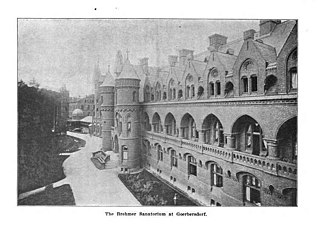
A sanatorium, also sanitarium or sanitorium, is a historic name for a specialised hospital for the treatment of specific diseases, related ailments and convalescence. Sanatoriums are often in a healthy climate, usually in the countryside. The idea of healing was an important reason for the historical wave of establishments of sanatoriums, especially at the end of the 19th- and early 20th centuries. One sought, for instance, the healing of consumptives especially tuberculosis or alcoholism, but also of more obscure addictions and longings of hysteria, masturbation, fatigue and emotional exhaustion. Facility operators were often charitable associations such as the Order of St. John and the newly founded social welfare insurance companies.

Casa Bonita is a Mexican restaurant in Lakewood, Colorado, located within the Lamar Station Plaza. It first opened in 1974, and was originally part of a chain of Mexican entertainment restaurants that started in Oklahoma City. The restaurant has attracted a cult following among Colorado residents since its opening, and is considered by many to be an iconic establishment of Lakewood and the greater Denver metropolitan area.

The Rocky Mountain College of Art + Design (RMCAD) is a private for-profit art school in Lakewood, Colorado. The college was founded in 1963 by Philip J. Steele, an artist and teacher.

Joslins was a chain of department stores that was based in Denver, Colorado, United States.
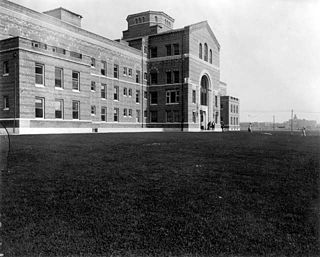
National Jewish Health is a Denver, Colorado academic hospital/clinic doing research and treatment in respiratory, cardiac, immune and related disorders. It is an internationally respected medical center that draws people from many countries to receive care. Founded in 1899 to treat tuberculosis, it is non-sectarian but had funding from B'nai B'rith until the 1950s.

Frances Jacobs was born in Harrodsburg, Kentucky, to Jewish Bavarian immigrants and raised in Cincinnati, Ohio. She married Abraham Jacobs, the partner of her brother Jacob, and came west with him to Colorado where Wisebart and Jacobs had established businesses in Denver and Central City. In Denver, Frances Jacobs became a driving force for the city's charitable organizations and activities, with national exposure. Among the philanthropical organizations she founded, she is best remembered as a founder of the United Way and the Denver's Jewish Hospital Association.
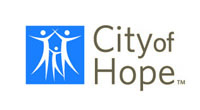
City of Hope is a private, non-profit clinical research center, hospital and graduate school located in Duarte, California, United States. The center's main campus resides on 110 acres (45 ha) of land adjacent to the boundaries of Duarte and Irwindale, with a network of clinical practice locations throughout Southern California, satellite offices in Monrovia and Irwindale, and regional fundraising offices throughout the United States.

The Intermountain Jewish News (IJN) is a weekly newspaper serving the Denver-Boulder communities and the greater Rocky Mountain Jewish community (Colorado, New Mexico, Wyoming, Utah, and Montana).
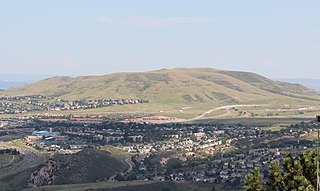
Lakewood is the home rule municipality that is the most populous municipality in Jefferson County, Colorado, United States. The city population was 155,984 at the 2020 U.S. Census, making Lakewood the fifth most populous city in Colorado and the 167th most populous city in the United States. Lakewood is a suburb of Denver and is a principal city of the Denver–Aurora–Lakewood, CO Metropolitan Statistical Area and a major city of the Front Range Urban Corridor.

William Ellsworth Fisher was an architect who founded the Denver, Colorado firm that became Fisher & Fisher.

The Minnesota State Sanatorium for Consumptives, also known as the Ah-Gwah-Ching Center, was opened in 1907 to treat tuberculosis patients. The name "Ah-Gwah-Ching" means "out-of-doors" in the Ojibwe language. The center remained a treatment center for tuberculosis until January 1, 1962. During that time, it treated nearly 14,000 patients. In 1962, it became a state nursing home known as the Ah-Gwah-Ching Nursing Home, serving geriatric patients with various mental and physical illnesses. At its peak in the 1970s, the nursing home had as many as 462 patients.
The town of Colorado Springs, Colorado, played an important role in the history of tuberculosis in the era before antituberculosis drugs and vaccines. Tuberculosis management before this era was difficult and often of limited effect. In the 19th century, a movement for tuberculosis treatment in hospital-like facilities called sanatoriums became prominent, especially in Europe and North America. Thus people sought tuberculosis treatment in Colorado Springs because of its dry climate and fresh mountain air. Some people stayed in boarding houses, while others sought the hospital-like facilities of sanatoriums. In the 1880s and 1890s, it is estimated that one-third of the people living in Colorado Springs had tuberculosis. The number of sanatoriums and hospitals increased into the twentieth century. During World War II, medicines were developed that successfully treated tuberculosis and by the late 1940s specialized tuberculosis treatment facilities were no longer needed.
John E. Streltzer was a legislator in the U.S. state of Colorado, philanthropist, and former U.S. Director of Customs for Colorado and Wyoming.
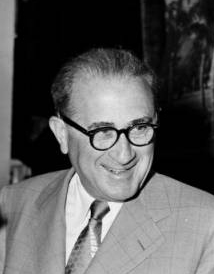
Samuel H. Golter was born in Russia but emigrated to the United States in 1906. In 1926, he became superintendent of the Los Angeles Sanatorium, a free treatment center run by the Jewish Consumptive Relief Association in Duarte, California. In 1932, Golter became Executive Director. He led a nationwide campaign to eliminate the institution's large debt, followed by a successful expansion. Under his leadership, the institution transitioned from a small tuberculosis treatment center to a major research, teaching, and treatment center for cancer and other diseases, with a $600,000 annual budget. Long nicknamed "The City of Hope", the expanded institution was officially renamed the City of Hope National Medical Center.
The history of the Jews in Denver, Colorado extends from the discovery of gold in 1858 to the present day. Early Jewish pioneers were largely of German backgrounds and were deeply involved in politics and local affairs, and some were among the most prominent citizens of the time. Beginning in the 1880s, the influx of Jewish immigrants from Eastern Europe to the U.S. expanded the Denver Jewish community and exposed cultural rifts between Jews from German versus Yiddish speaking backgrounds. As Denver became a center for those seeking tuberculosis treatment, Jews were among those who came seeking healing, and the Jewish community set up two important organizations that aided not only sick Jews, but the sick poor of all backgrounds. In the early 20th century, the Orthodox community in the city's West Side attracted religious new immigrants and built up a number of communal institutions. The community, especially the poor in the West Side, had to deal with anti-Semitism, sometimes violent, and the rise of the Ku Klux Klan in Colorado. Beginning in the 1950s and continuing through the 1970s, the community began to spread out of the West Side to the East Side, and then the suburbs. The community remains vibrant today, and as it has rapidly grown in the past decades so have the number of educational, recreational, and religious organizations and institutions that serve it.
Jacob Marinoff was a Russian-born American Yiddish publisher and author. He was one of the founders of New York satirical weekly Der Groyser Kundes. He published three volumes of verse, and co-edited a satire collection.
The Jewish Outlook was an American weekly newspaper that was published in Denver, Colorado from 1903 to 1913. It was the first Jewish-affiliated newspaper published in Colorado and the unofficial organ of the National Jewish Hospital. The Outlook opposed both Zionism and Orthodox Judaism.
Charles David Spivak was a Russian Empire-born American medical doctor, community leader, and writer. He was one of the founders of the Jewish Consumptives' Relief Society in what is now Lakewood, Colorado. He was the editor of The Sanatorium as well as the first editor of the Denver Jewish News (now known as the Intermountain Jewish News. With Yehoash, he is also the author of what was once the premier Yiddish-English Dictionary.

Montefiore Home for Chronic Invalids was an American sanatorium charity hospital. Founded in 1884 in Manhattan, New York at Avenue A and 84th Street, the sanatorium relocated to a larger building in Manhattan on 138th Street before removing to The Bronx in 1910. It also changed names several times.

















